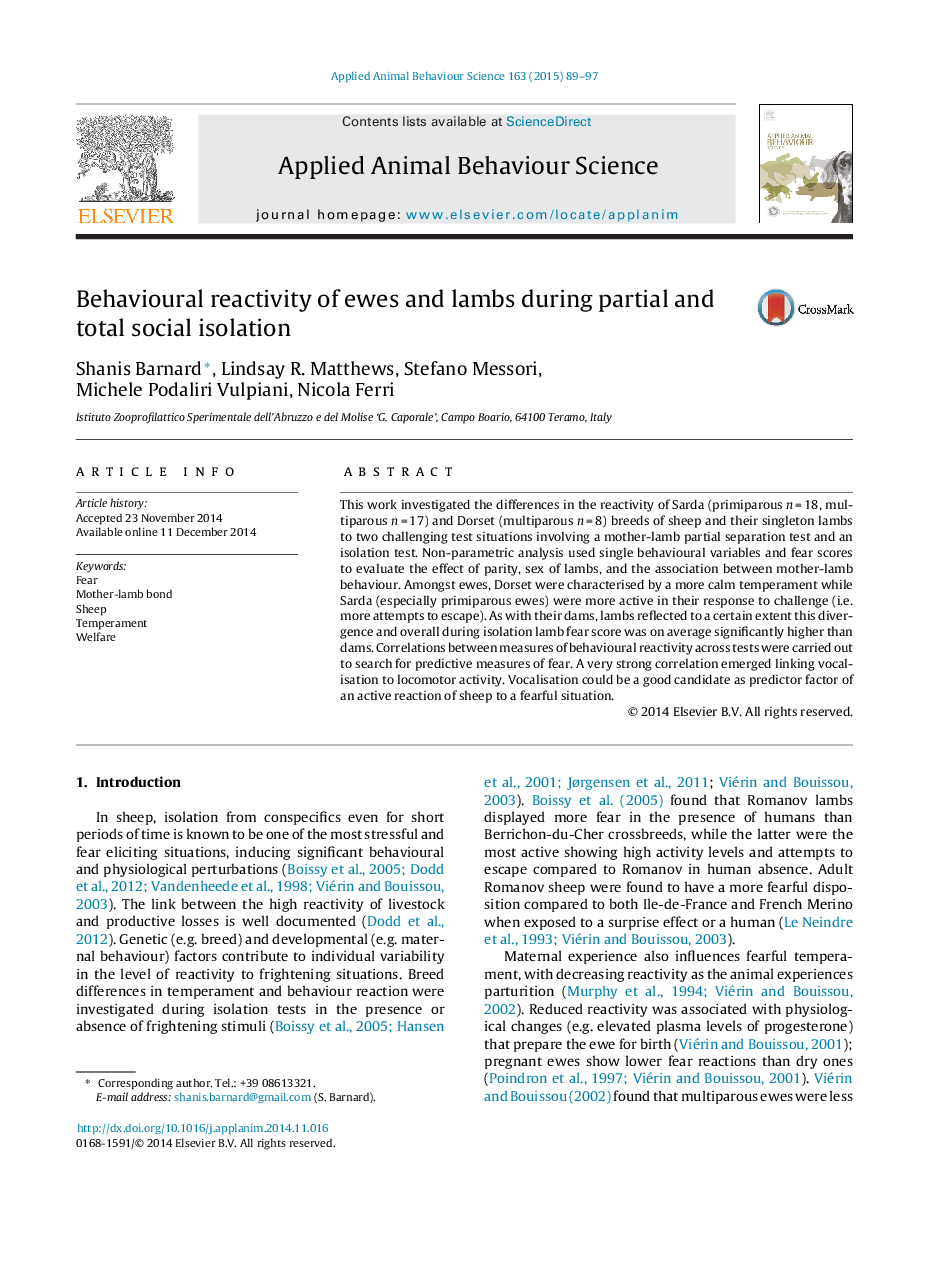| Article ID | Journal | Published Year | Pages | File Type |
|---|---|---|---|---|
| 6379619 | Applied Animal Behaviour Science | 2015 | 9 Pages |
â¢The behavioural reactivity of ewes and lambs to two challenging tests was recorded.â¢Vocalisations were strongly linked to active locomotor activities.â¢Two temperament profiles emerged from the breed comparison.â¢Lambs reflected their mother's temperament.â¢Overall, fear score was higher in lambs than ewes.
This work investigated the differences in the reactivity of Sarda (primiparous n = 18, multiparous n = 17) and Dorset (multiparous n = 8) breeds of sheep and their singleton lambs to two challenging test situations involving a mother-lamb partial separation test and an isolation test. Non-parametric analysis used single behavioural variables and fear scores to evaluate the effect of parity, sex of lambs, and the association between mother-lamb behaviour. Amongst ewes, Dorset were characterised by a more calm temperament while Sarda (especially primiparous ewes) were more active in their response to challenge (i.e. more attempts to escape). As with their dams, lambs reflected to a certain extent this divergence and overall during isolation lamb fear score was on average significantly higher than dams. Correlations between measures of behavioural reactivity across tests were carried out to search for predictive measures of fear. A very strong correlation emerged linking vocalisation to locomotor activity. Vocalisation could be a good candidate as predictor factor of an active reaction of sheep to a fearful situation.
